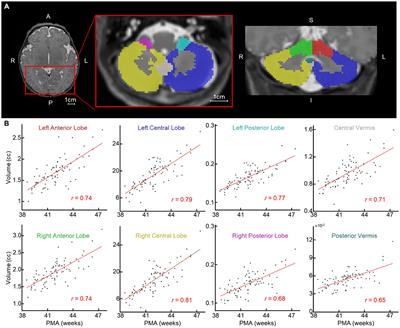Cerebellar volume and functional connectivity in neonates predicts social and emotional development in toddlers
Over the past decade, a growing body of research in adults has emphasized the role of the cerebellum in social and emotional cognition.

This has been further supported by findings of delayed social and emotional development in toddlers with cerebellar injury during the fetal and newborn periods. However, the contributions of the cerebellum to social–emotional development in typically developing newborns are unclear. To bridge this gap in knowledge, we used multimodal MRI to investigate associations between cerebellar structure and function in 88 healthy neonates (mean ± sd of postmenstrual age, = 42.00 ± 1.91 weeks) and social–emotional development at 18-months assessed using the Infant-Toddler Social–Emotional Assessment (ITSEA) (mean age on ITSEA: 18.32 ± 1.19 months old). We found that cerebellar volume was not associated with ITSEA domain scores at 18 months. We further demonstrated cerebellar functional gradient (FGR) defined using principal component analysis (PCA) was associated with Externalizing domain (linear regression model, false-discovery-rate-adjusted p = 0.013). This cluster (FGR7) included the left dentate, right VI, left Vermis VIIIb, and right V lobules. Finally, we demonstrated that either structural or functional features of the cerebellum reliably predicted scores on the Externalizing and Internalizing domains (correlation between actual and predicted scores: for structural, Fisher’s z = 0.48 ± 0.01 for Internalizing, p = 0.01; for functional, Fisher’s z = 0.45 ± 0.01 for Externalizing, p = 0.02; with permutation test). Collectively, our findings suggest that the cerebellum plays an important role in social–emotional development during the critical early stages of life..
Read the full article at the original website
References:
